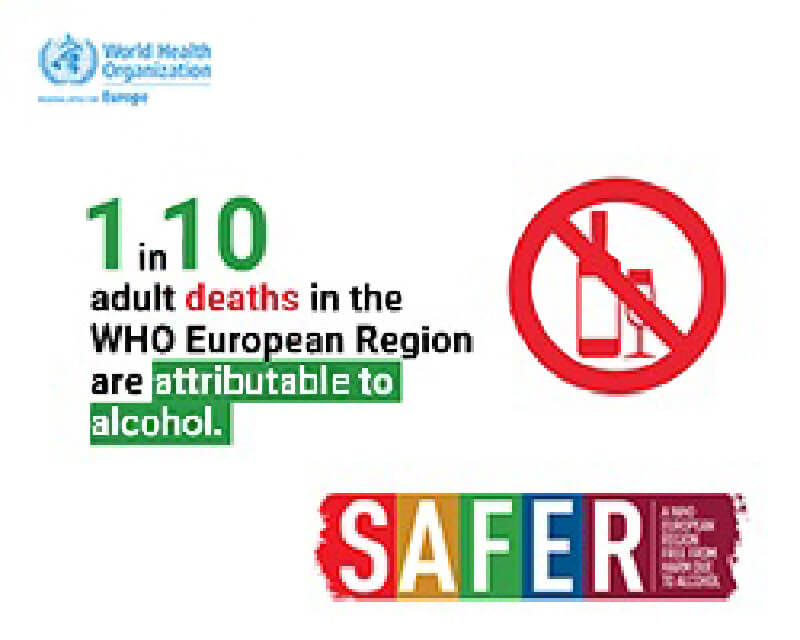The major U.S. index futures are pointing to a higher open on Thursday, with stocks likely to move back to the upside following the pullback seen over the course of the previous session.
The Dow is likely to benefit from an early advance by shares of Bank of America (BAC), with the financial giant moving higher in pre-market trading after reporting better than expected first quarter results.
Fellow Dow component UnitedHealth (UNH) may also see initial strength after the managed care company reported first quarter results that beat analyst estimates on both the top and bottom lines.
Shares of Citigroup (C) are also seeing notable pre-market strength after the financial giant reported first quarter results that exceeded estimates.
Early buying interest may also be generated in reaction to a batch of better than expected U.S. economic data, including a Commerce Department report showing retail sales spiked by much more than expected in the month of March.
A separate report released by the Labor Department showed first-time claims for U.S. unemployment benefits pulled back by much more than anticipated in the week ended April 10th.
Stocks came under pressure over the course of the trading day on Wednesday after moving to the upside early in the session. Reflecting weakness among technology stocks, the tech-heavy Nasdaq led the way lower.
After jumping by 1.1 percent in the previous session to its highest closing level in nearly two months, the Nasdaq slumped 138.26 points or 1 percent to 13,857.84.
The S&P 500 also slid 16.93 points or 0.4 percent to 4,124.66 after reaching a new record intraday high in early trading.
On the other hand, the Dow pulled back well off its best levels of the day but still closed up 53.62 points or 0.2 percent at 33,730.89. The blue chip index also set a new record intraday high before giving back ground.
The uptick by the Dow was partly due to a strong gain by Goldman Sachs (GS), with the financial giant jumping by 2.3 percent after reporting first quarter results that beat analyst estimates on both the top and bottom lines.
Banking giant Wells Fargo (WFC) also showed a strong move to the upside after reporting better than expected first quarter results.
Meanwhile, shares of JPMorgan Chase (JPM) moved notably lower even though the financial giant reported first quarter results that exceeded expectations.
The weakness that emerged in the broader markets seemed to coincide with a downturn by shares of Coinbase (COIN), which spiked to a high of $429.54 but pulled back well below their debut price of $381 before closing at $328.28.
The cryptocurrency exchange’s direct listing on the Nasdaq was closely watched by investors and described as a “watershed moment” for the industry.
Traders also kept an eye on remarks by Federal Reserve Chair Jerome Powell, who told the Economic Club of Washington the central bank is likely to scale back its asset purchase program well before raising interest rates.
“We will reach the time at which we will taper asset purchases when we have made substantial further progress towards our goals from last December,” Powell said.
He added, “That would in all likelihood be before, well before, the time we would consider raising interest rates. We have not voted on that order but that is the sense of the guidance.”
Meanwhile, the Fed released its Beige Book, which noted economic activity in the U.S. accelerated to a moderate pace from late February to early April.
The release of the Beige Book comes two weeks ahead of the Federal Reserve’s next monetary policy meeting, which is scheduled for April 27-28.
In other U.S. economic news, the Labor Department released a report showing another notable increase by import prices in the month of March.
Gold stocks came under pressure over the course of the session, dragging the NYSE Arca Gold Bugs Index down by 1.5 percent. The weakness among gold stocks came amid a decrease by the price of the precious metal.
Semiconductor and software stocks also showed notable moves to the downside, with the Philadelphia Semiconductor Index and the Dow Jones U.S. Software Index both falling by 1.2 percent.
On the other hand, substantial strength remained visible among energy stocks, which moved sharply higher along with the price of crude oil.
Reflecting the strength in the energy sector, the Philadelphia Oil Service Index spiked by 5.7 percent, the NYSE Arca Oil Index surged up by 3.2 percent and the NYSE Arca Natural Gas Index jumped by 2.2 percent.
Steel stocks also held on to strong gains, with the NYSE Arca Steel Index climbing by 3.1 percent to its best closing level in almost ten years.
Commodity, Currency Markets
Crude oil futures are slipping $0.30 to $62.85 a barrel after spiking $2.97 to $63.15 a barrel on Wednesday. Meanwhile, after falling $11.30 to $1,736.30 an ounce in the previous session, gold futures are climbing $11.90 to $1,748.20 an ounce.
On the currency front, the U.S. dollar is trading at 108.77 yen versus the 108.93 yen it fetched at the close of New York trading on Wednesday. Against the euro, the dollar is valued at $1.1959 compared to yesterday’s $1.1980.
Asia
Asian shares ended mixed on Thursday as fears of a fresh U.S.-China tussle as well as renewed concerns over the surge in coronavirus cases in the region offset stellar earnings from U.S. banks against the backdrop of an improving economy.
Chinese and Hong Kong shares fell after a Chinese diplomat indirectly warned the U.S. over strong linkages and interference over Hong Kong issues.
Also, Taiwan President Tsai Ing-wen told a visiting delegation of former senior U.S. officials that the island would work with the United States to deter “adventurous maneuvers and provocations” amid threats from Chinese military activities.
China’s Shanghai Composite Index dropped 17.73 points, or 0.5 percent, to 3,398.99, while Hong Kong’s Hang Seng Index ended down 107.69 points, or 0.4 percent, at 28,793.14.
Japanese shares ended on a flat note after Bank of Japan Governor Haruhiko Kuroda warned the economic recovery was likely to be modest due to uncertainty over the coronavirus pandemic. Japan on Wednesday reported more than 4,000 new cases as the highly contagious variants drive a fourth wave of infections.
The Nikkei 225 Index ended marginally higher at 29,642.69, while the broader Topix closed 0.4 percent higher at 1,959.13. While banks and shippers led gainers, tech shares lost ground. Advantest gave up 2.6 percent and Tokyo Electron dropped 1.9 percent.
Australian markets advanced as the jobs report for March came in better than forecast. The benchmark S&P/ASX 200 Index rose 35.50 points, or 0.5 percent, to 7,058.60, while the broader All Ordinaries Index ended up 36.90 points, or 0.5 percent, at 7,317.50.
The Australian economy added 70,700 jobs last month, far surpassing forecasts for the addition of 35,000 jobs, official data showed. The jobless rate dropped to 5.6 percent from 5.8 percent in February.
Mining heavyweights BHP and Rio Tinto jumped around 3 percent, while energy majors Oil Search, Santos and Beach Energy climbed 1-3 percent. Tech stocks finished broadly lower with modest losses. Gold miners slumped, with Evolution Mining losing as much as 5.6 percent.
Seoul stocks finished modesty higher after the Bank of Korea kept its benchmark lending rate unchanged at a record low 0.50 percent, in line with expectations.
The benchmark Kospi rose 11.95 points, or 0.4 percent, to 3,194.33, extending gains for the fourth straight session as Bank of Korea Governor Lee Ju-yeol said the economy will still expanding faster than previously expected despite an uptick in coronavirus infections.
Mobile messenger operator Kakao soared 8 percent in its first day of trading after splitting its shares fivefold.
European stocks have edged higher on Thursday as Treasury yields pulled back after a steady stream of dovish comments from Federal Reserve officials.
Speaking on Wednesday to the Economic Club of Washington, Fed Chair Jerome Powell reiterated that the Fed would only begin winding down its asset purchases when the economy has made substantial progress towards its goals.
Powell also signaled that tapering would happen “well before” the U.S. central bank starts considering raising interest rates.
While the German DAX Index has risen by 0.3 percent, the French CAC 40 Index and the U.K.’s FTSE 100 Index are both up by 0.5 percent.
Swiss engineering company ABB has shown a strong move to the upside after raising its full-year sales outlook.
Norwegian lender Sbanken has also soared after the country’s largest bank DNB announced an all-share offer for the rival.
Dutch brewer Heineken NV has also risen. The company said it aims to be carbon neutral in its production sites by 2030 in order to meet the 1.5°C goal set by the Paris Agreement.
Glencore, BHP, Anglo American and Antofagasta has also advanced as metal prices hit multi-year high,s supported by weaker dollar and Fed comments over a strong U.S. economic recovery.
Advertising company Publicis Groupe has also jumped. The company has returned to organic growth for the first time since before the COVID-19 pandemic.
German real estate companies are also in focus after the Constitutional Court ruled that Berlin’s rent cap was unconstitutional.
Meanwhile, BP Plc and Royal Dutch Shell are moving lower as oil has edged down after climbing nearly 5 percent overnight on signs on increasing crude demand.
Food delivery company Deliveroo Holdings has also fallen. In its first trading update since its market debut last month, the company said its orders more than doubled in the quarter to end-March.
GlaxoSmithKline has also declined. The pharmaceutical giant said that it has stopped enrolling patients in a trial studying a combination drug therapy using feladilimab in cancer patients.
In economic news, German consumer prices grew 1.7 percent year-on-year in March, in line with the preliminary estimate, following a 1.3 percent rise in February, final data from the statistical office Destatis showed. A similar higher rate was last reported in February 2020.
French consumer prices increased 1.1 percent year-on-year in March, in line with the provisional estimate and faster than the 0.6 percent rise in February, final data from the statistical office Insee showed. This was the highest rate since February 2020, when prices were up 1.4 percent.
U.S. Economic Reports
Retail sales in the U.S. spiked by much more than expected in the month of March, according to a report released by the Commerce Department on Thursday.
The Commerce Department said retail sales skyrocketed by 9.8 percent in March after tumbling by a revised 2.7 percent in February.
Economists had expected retail sales to surge up by 5.9 percent compared to the 3.0 percent slump originally reported for the previous month.
Excluding sales by motor vehicle and parts dealers, retail sales soared by 8.4 percent in March after plunging by a revised 2.5 percent in February. Ex-auto sales were expected to jump by 5.0 percent.
A separate report released by the Labor Department showed first-time claims for U.S. unemployment benefits pulled back by much more than anticipated in the week ended April 10th.
The Labor Department said initial jobless claims tumbled to 576,000, a decrease of 193,000 from the previous week’s revised level of 769,000.
Economists had expected jobless claims to decline to 700,000 from the 744,000 originally reported for the previous week.
With the much bigger than expected decrease, jobless claims fell to their lowest level since hitting 256,000 in the week ended March 14, 2020.
Separate reports released by the Federal Reserve Bank of New York and the Federal Reserve Bank of Philadelphia on Thursday showed faster growth in regional manufacturing activity in the month of April.
The New York Fed said its general business conditions index climbed to 26.3 in April from 17.4 in March, with a positive reading indicating growth in regional manufacturing activity. Economists had expected the index to inch up to 19.5.
Meanwhile, the Philly Fed said its index for current manufacturing activity rose to 50.2 in April from a downwardly revised 44.5 in March.
The increase surprised economists, who had expected the index to drop to 42.0 from the 51.8 originally reported for the previous month.
At 9:15 am ET, the Federal Reserve is scheduled to release its report on industrial production in the month of March. Economists expect industrial production to jump by 2.8 percent in March after slumping by 2.2 percent in February.
The National Association of Home Builders is due to release its report on homebuilder confidence in the month of April at 10 am ET. The housing market index is expected to inch up to 83 in April from 82 in March.
Also at 10 am ET, the Commerce Department is scheduled to release its report on business inventories in the month of February. Business inventories are expected to rise by 0.5 percent.
The Treasury Department is due to announce the details of this month’s auction of twenty-year bonds at 11 am ET.
At 11:30 am ET, Atlanta Federal Reserve President Raphael Bostic is scheduled to participate in an interview before virtual event, “The Atlantic’s Progress Report: The State of the Black Community.”
San Francisco Federal Reserve President Mary Daly is due to speak on financial stability and monetary policy before a virtual Money Marketeeers of New York University event at 2 pm ET.
At 4 pm ET, Cleveland Federal Reserve President Loretta Mester is scheduled to give a virtual student lecture on “Economic Inclusion” before an event hosted by Swarthmore College.
Stocks In Focus
Shares of PPD, Inc. (PPD) are moving sharply higher in pre-market trading after the clinical research services provider agreed to be acquired by Thermo Fisher (TMO) for $47.50 per share.
Apparel retailer American Eagle Outfitters (AEO) is also seeing significant pre-market strength after forecasting better than expected first quarter sales.
Shares of Commerce Bancshares (CBSH) may also see initial strength after the bank holding company reported first quarter results that beat expectations on both the top and bottom lines.
Drugstore chain Rite Aid (RAD) may also move to the upside after reporting a narrower than expected fiscal fourth quarter loss on revenues that exceeded estimates.
For comments and feedback contact: [email protected]














